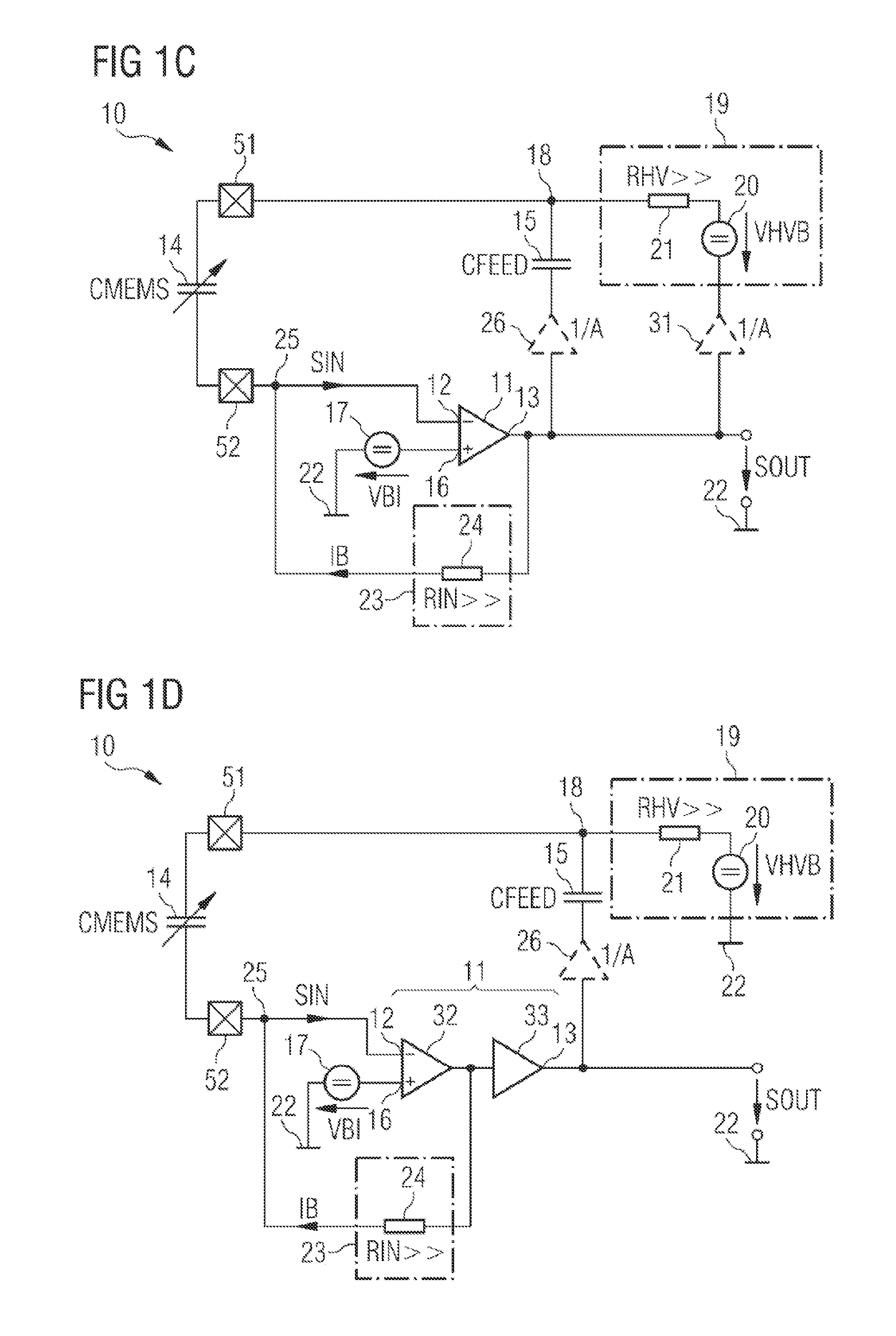Sensor arrangement and method for generating an amplified sensor signal
a technology of amplified sensor and array, which is applied in the direction of electrical testing, semiconductor electrostatic transducers, instruments, etc., can solve problems such as signal attenuation, and achieve the effect of cost-effectiveness
- Summary
- Abstract
- Description
- Claims
- Application Information
AI Technical Summary
Benefits of technology
Problems solved by technology
Method used
Image
Examples
Embodiment Construction
[0035]FIG. 1A shows an exemplary embodiment of a sensor arrangement 10. The sensor arrangement 10 comprises an amplifier 11 having a signal input 12 and a signal output 13. Moreover, the sensor arrangement 10 comprises a feedback path with a capacitive sensor 14 and a feedback capacitor 15. The capacitive sensor 14 and the feedback capacitor 15 are arranged in series between the signal output 13 and the signal input 12. The capacitive sensor 14 is directly connected to the signal input 12, whereas the feedback capacitor 15 is connected to the signal output 13. The capacitive sensor 14 may be realized as a capacitive microphone. For instance, the capacitive sensor 14 is implemented as a micro-electro-mechanical-system microphone, abbreviated to MEMS microphone. The capacitive sensor 14 typically has a capacitance value CMEMS that is variable and obtains a very small nominal value. The feedback capacitor 15 has a capacitance value CFEED that is constant. Furthermore, the amplifier 11 ...
PUM
 Login to View More
Login to View More Abstract
Description
Claims
Application Information
 Login to View More
Login to View More - R&D
- Intellectual Property
- Life Sciences
- Materials
- Tech Scout
- Unparalleled Data Quality
- Higher Quality Content
- 60% Fewer Hallucinations
Browse by: Latest US Patents, China's latest patents, Technical Efficacy Thesaurus, Application Domain, Technology Topic, Popular Technical Reports.
© 2025 PatSnap. All rights reserved.Legal|Privacy policy|Modern Slavery Act Transparency Statement|Sitemap|About US| Contact US: help@patsnap.com



